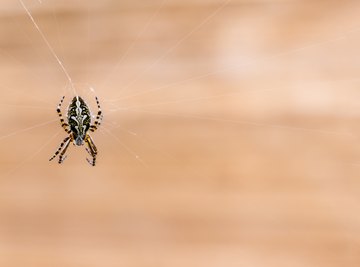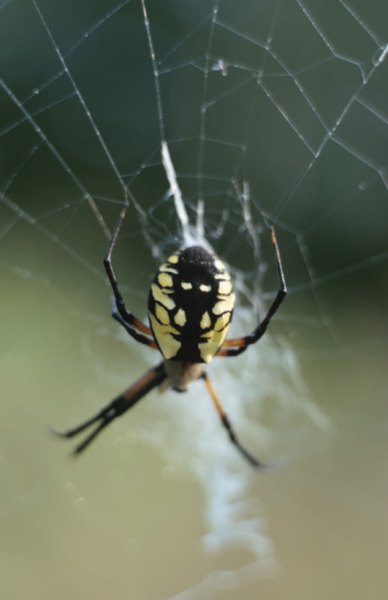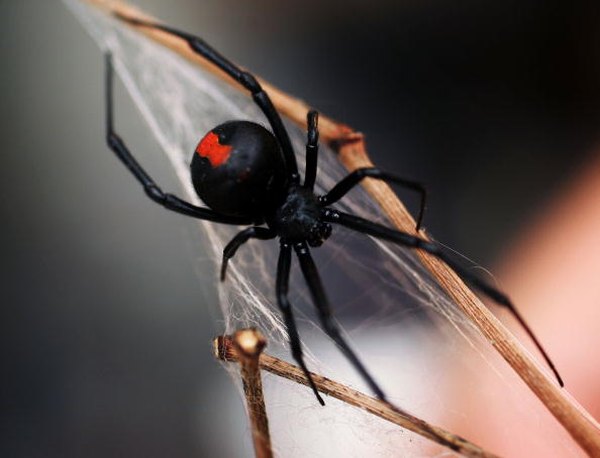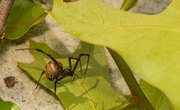
There are more than 30,000 known species of spiders in the world, and entomologists estimate that there may be as many as 100,000 total spider species. Consequently, identifying spiders can prove challenging. With careful observation, however, a spider can be narrowed down to a particular family of spiders. Though most spiders are technically venomous in that they inject poison when they bite, few spiders have venom strong enough to harm people. Spiders are an important part of the ecological system and play a vital role in preventing insect overpopulation.

Inspect the spider's legs. While all spiders and arachnids have eight legs, the appearance of their legs differs vastly from species to species. Spiders with long legs and oval bodies may be wolf spiders, who hunt for their prey instead of building webs. The legs of these spiders are normally a single color. Jumping spiders are known for their tall, jointed, hairy legs and round bodies. They are common in the United States and are occasionally mistaken for tarantulas. Jumping spiders can jump up to 40 times their own height.

Look for markings on the spider. Though spiders come in a huge variety of colors, the color patterns of the spider can frequently help narrow them down to a particular spider family. Orb weavers normally have dark bodies with brightly colored spots. Their legs may be colored as well. Wolf spider abdomens primarily are brown or black with lighter stripes on the sides. Trapdoor spiders have large heads that are often a different color from their abdomens. Brightly colored, partially translucent spiders found in webs may be meshweb spiders.
Note the size of the spider. Trapdoor and jumping spiders are among the largest spiders found in North America. Though they can look intimidating, they are neither aggressive nor venomous to humans. Wolf and fishing spiders are medium-sized spiders. Wolf spiders are most common around gardens and in the home; fishing spiders prefer living near bodies of water. Meshweb and crab spiders are among the smallest garden spiders.

Look for signs that the spiders may be venomous. The two most common venomous spiders in the United States, the black widow and the brown recluse, both have distinct markings. Black widows are black with red hourglass shapes on their abdomens. They may also have red dots on their bodies. Brown recluses have large bodies relative to their heads and have a faint violin-shaped tan marking on their otherwise brown abdomens.
Check for a distinctive body shape. Crab spiders are small spiders that may have protrusions from their abdomens or heads. They are named for their crablike appearance and build webs in gardens. Comb-footed spiders have very round abdomens and tiny heads. They frequently are light in color with bright markings. These spiders attach their webs to plants.
References
- "National Audubon Society Field Guide to North American Insects and Spiders"; National Audubon Society; 1980
- "National Wildlife Federation Field Guide to Insects and Spiders and Related Species of North America"; Arthur Evans, Craig Tufts; 2007
About the Author
Brenna Davis is a professional writer who covers parenting, pets, health and legal topics. Her articles have appeared in a variety of newspapers and magazines as well as on websites. She is a court-appointed special advocate and is certified in crisis counseling and child and infant nutrition. She holds degrees in developmental psychology and philosophy from Georgia State University.
